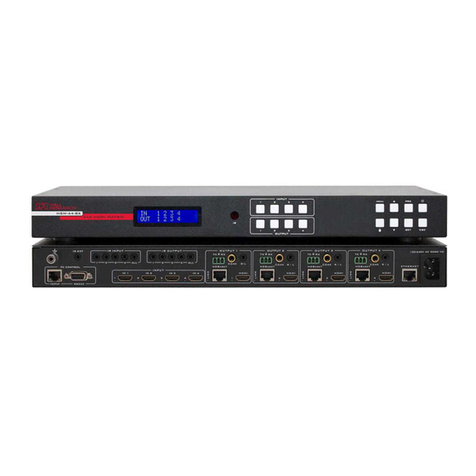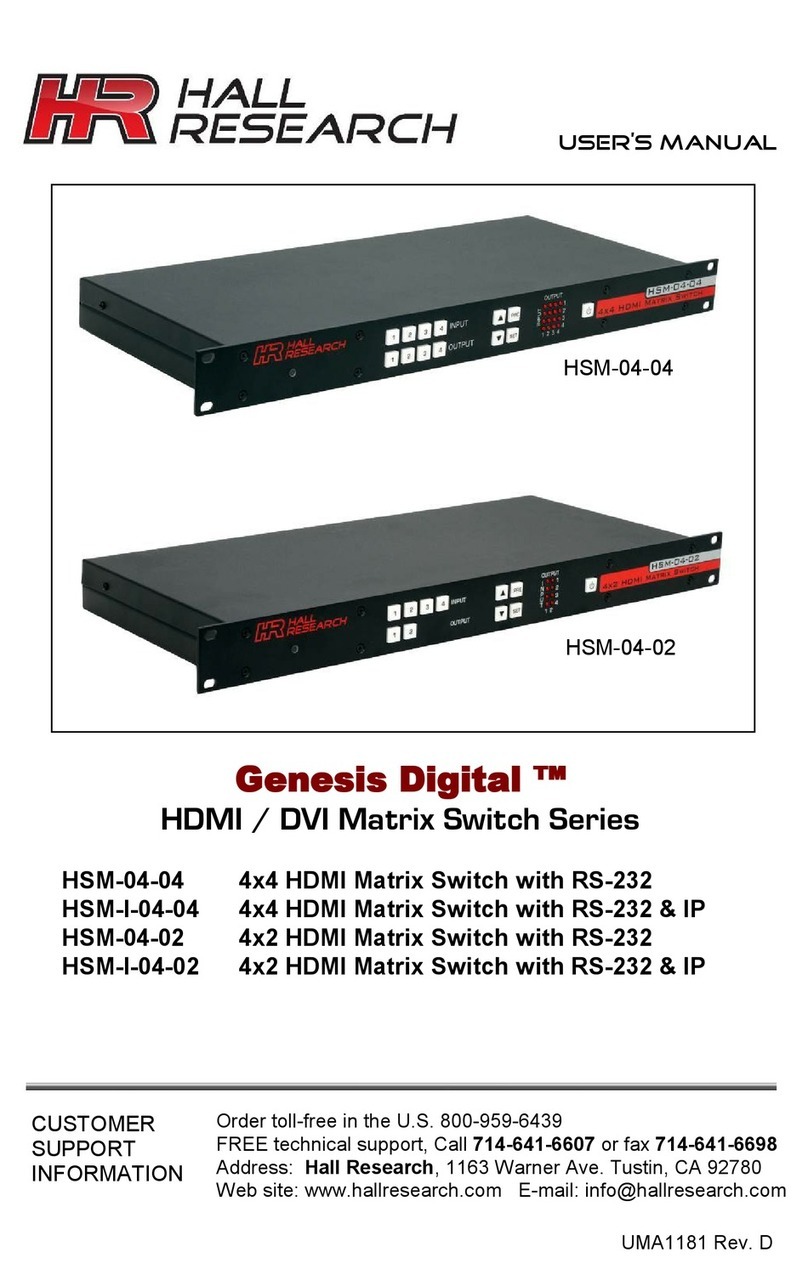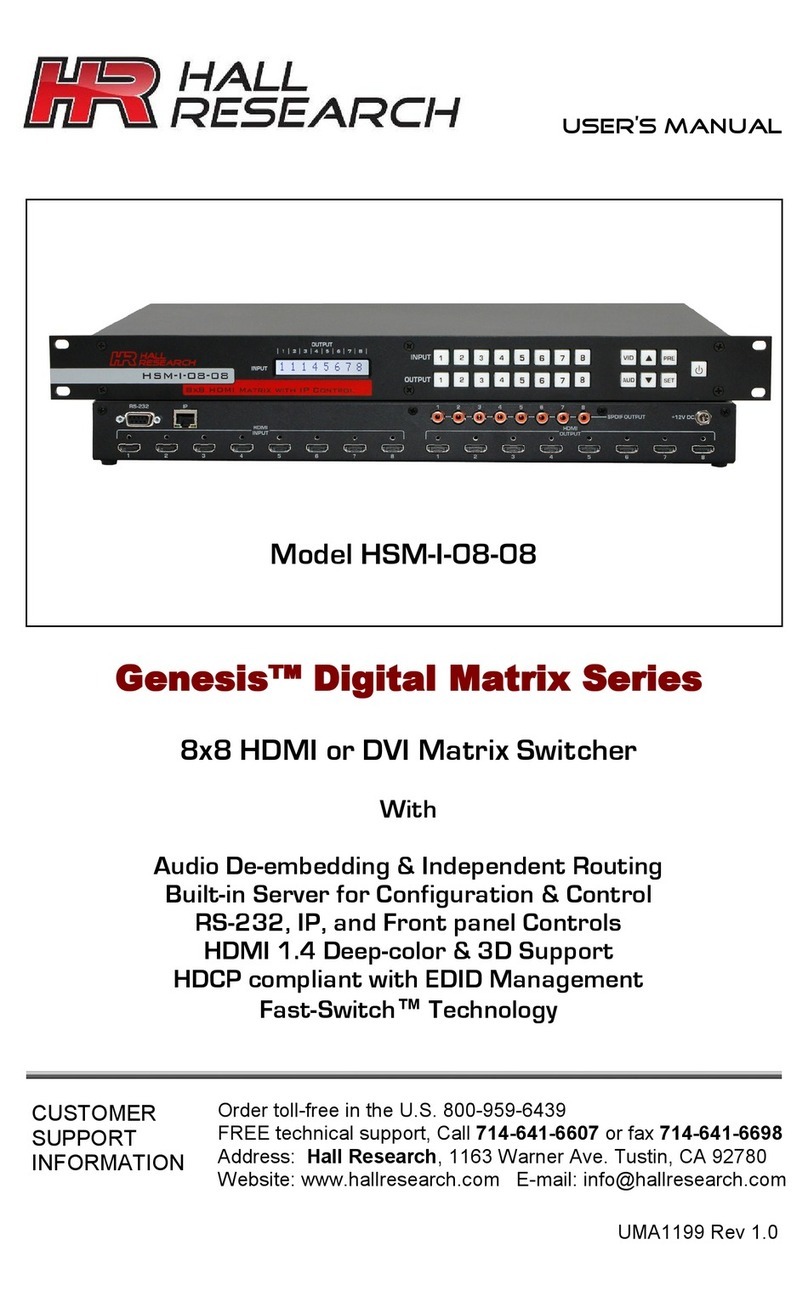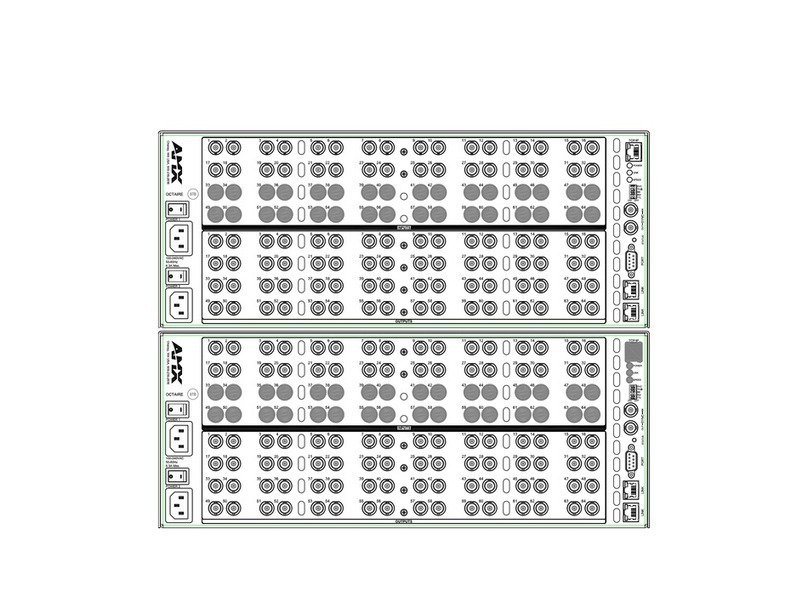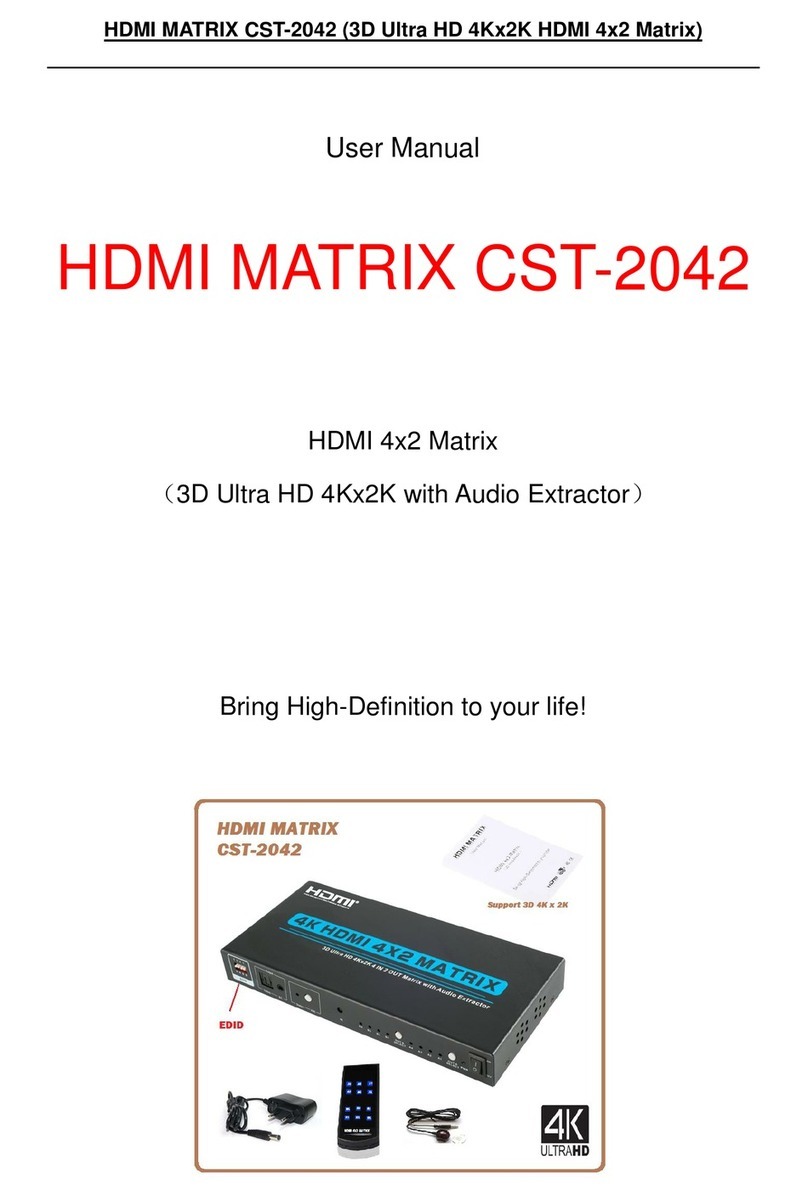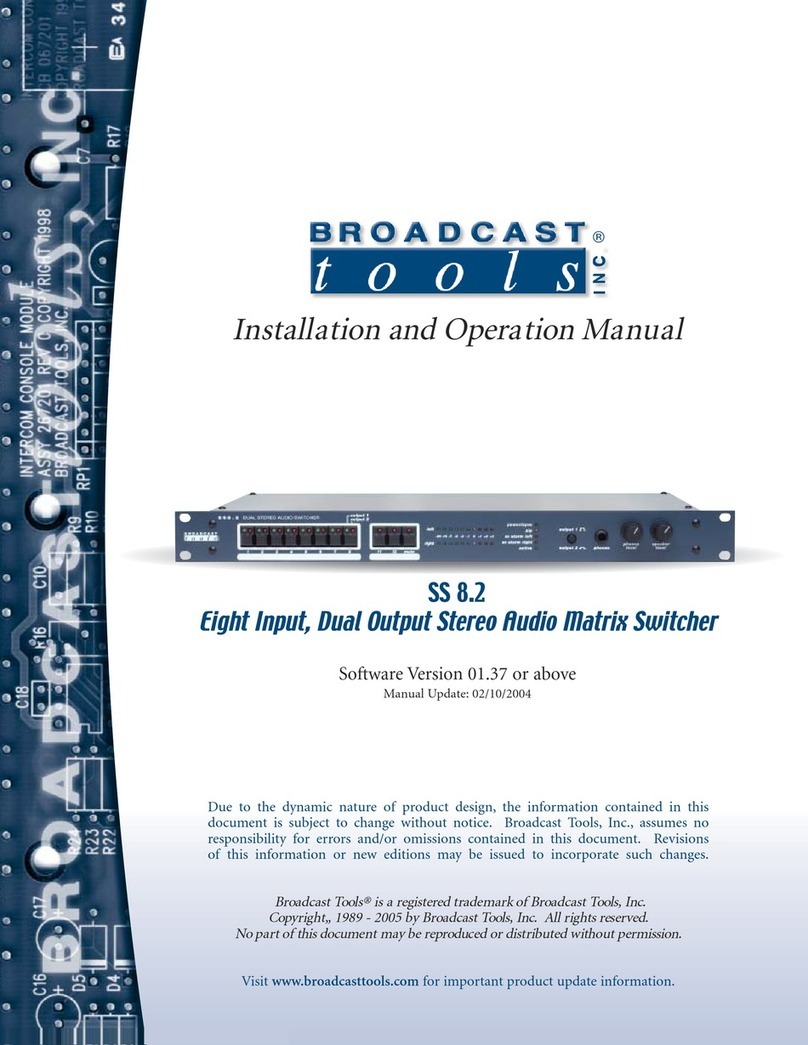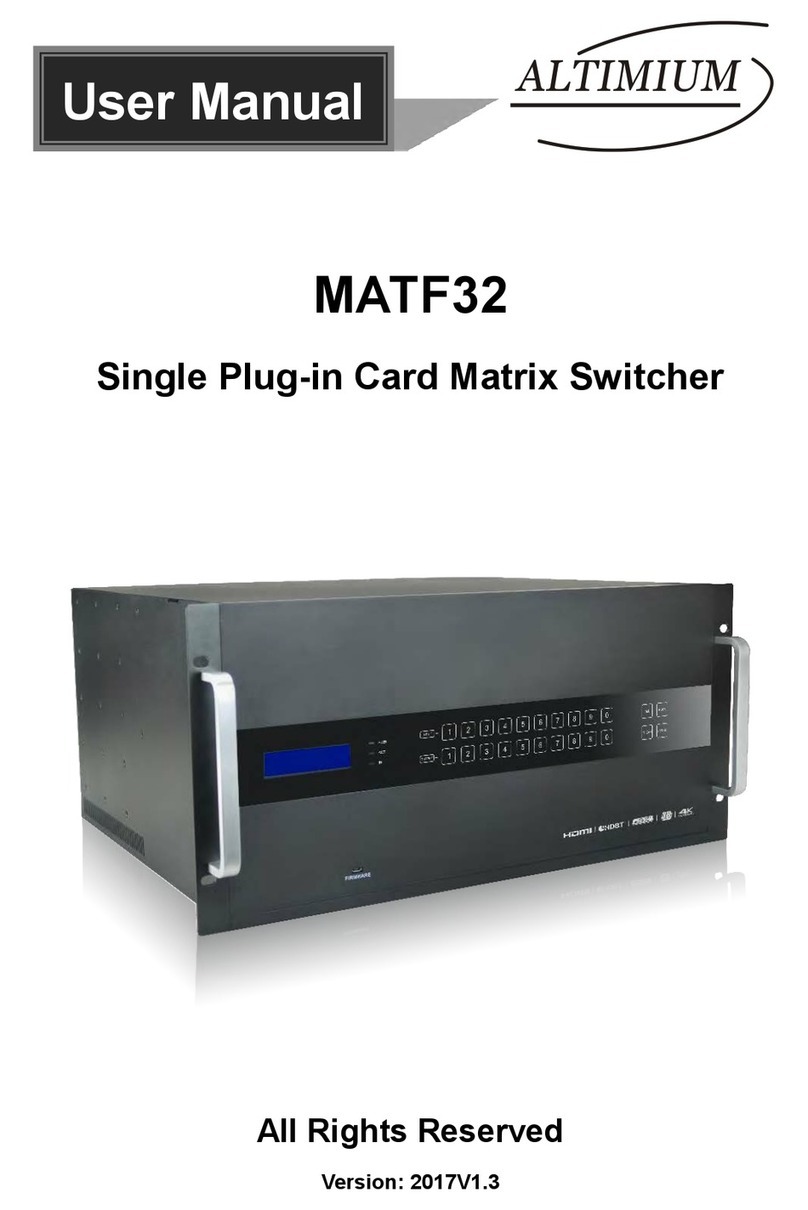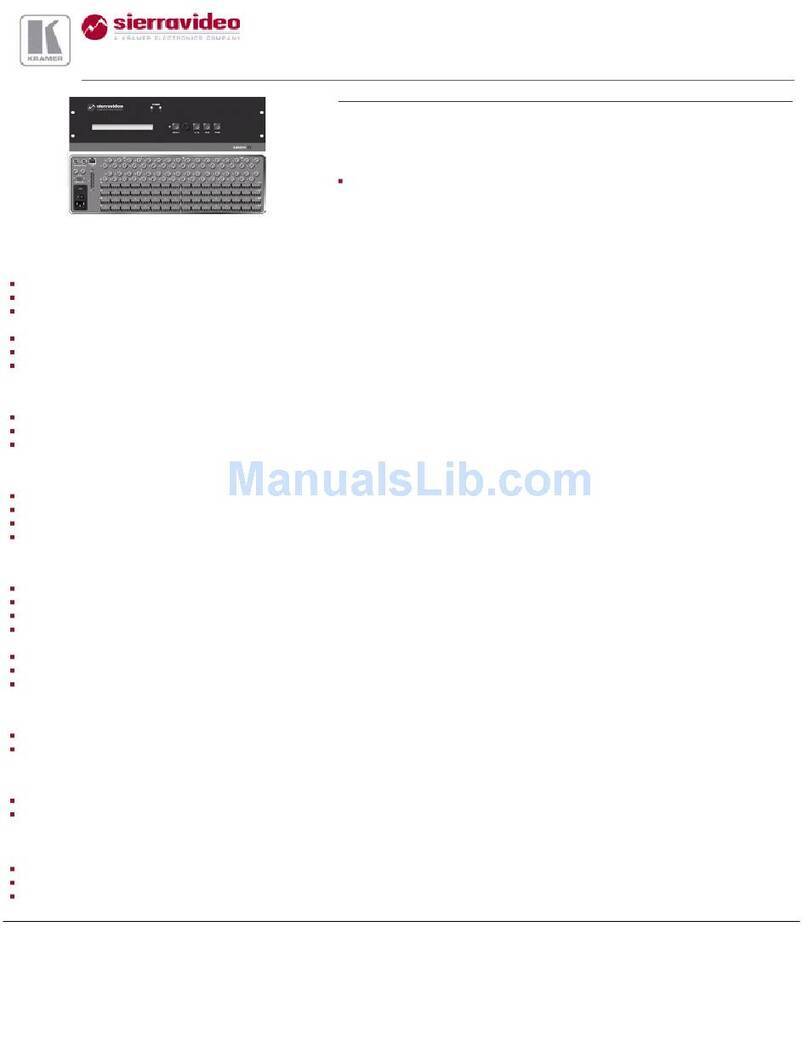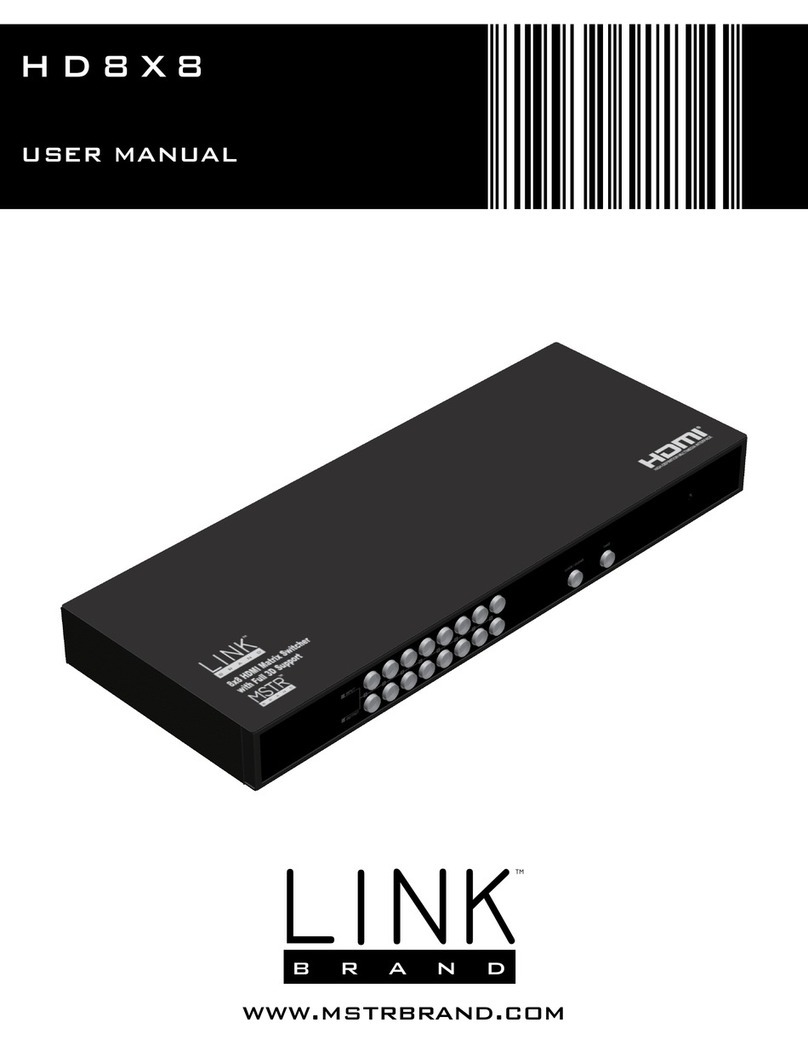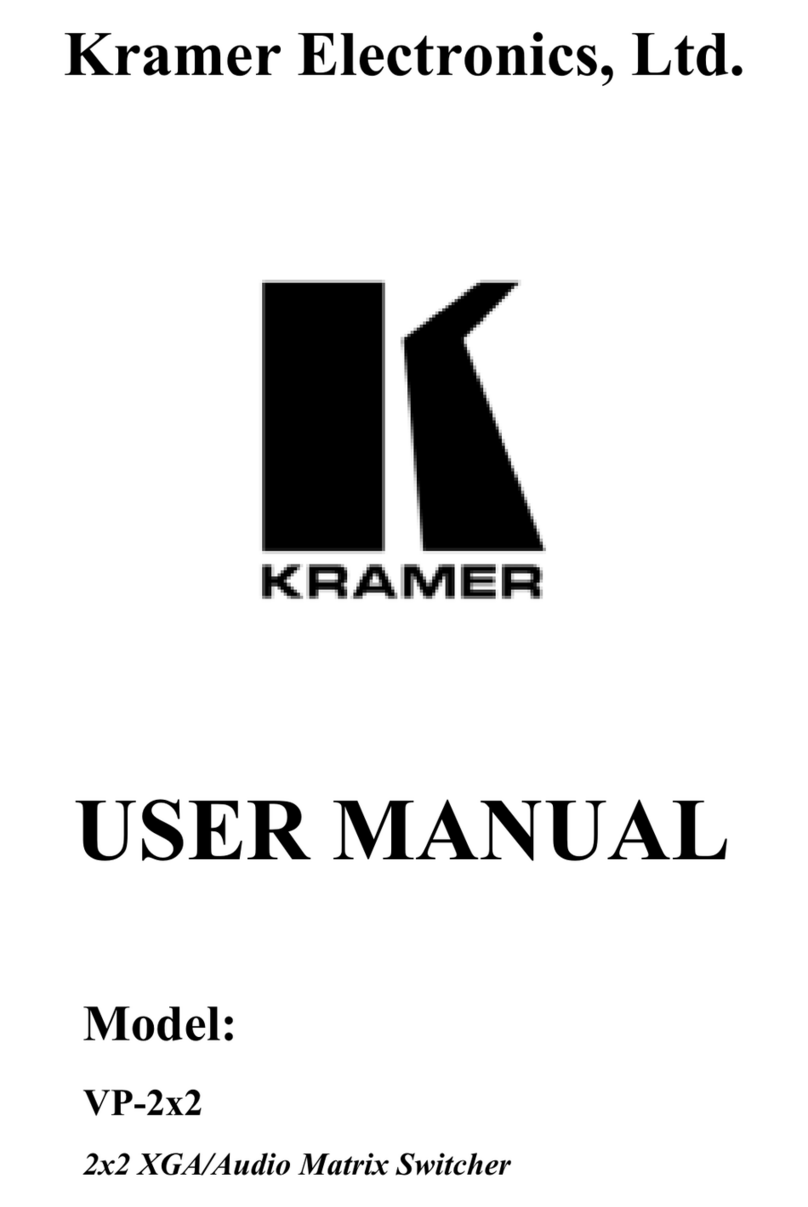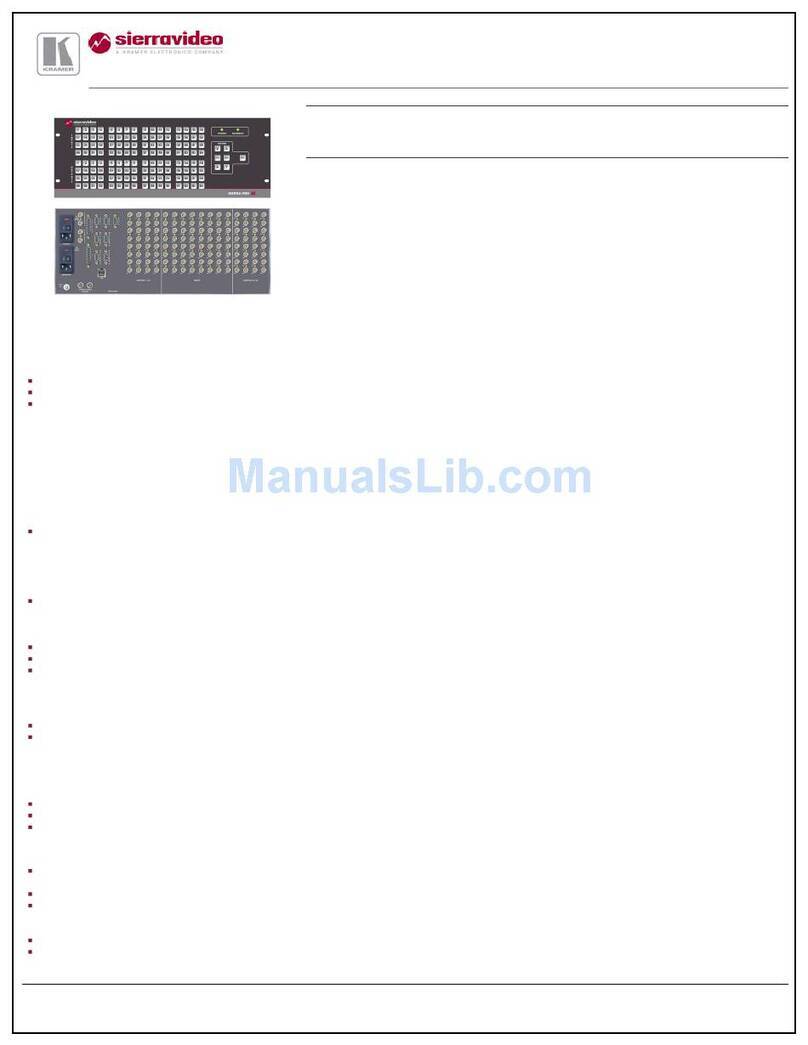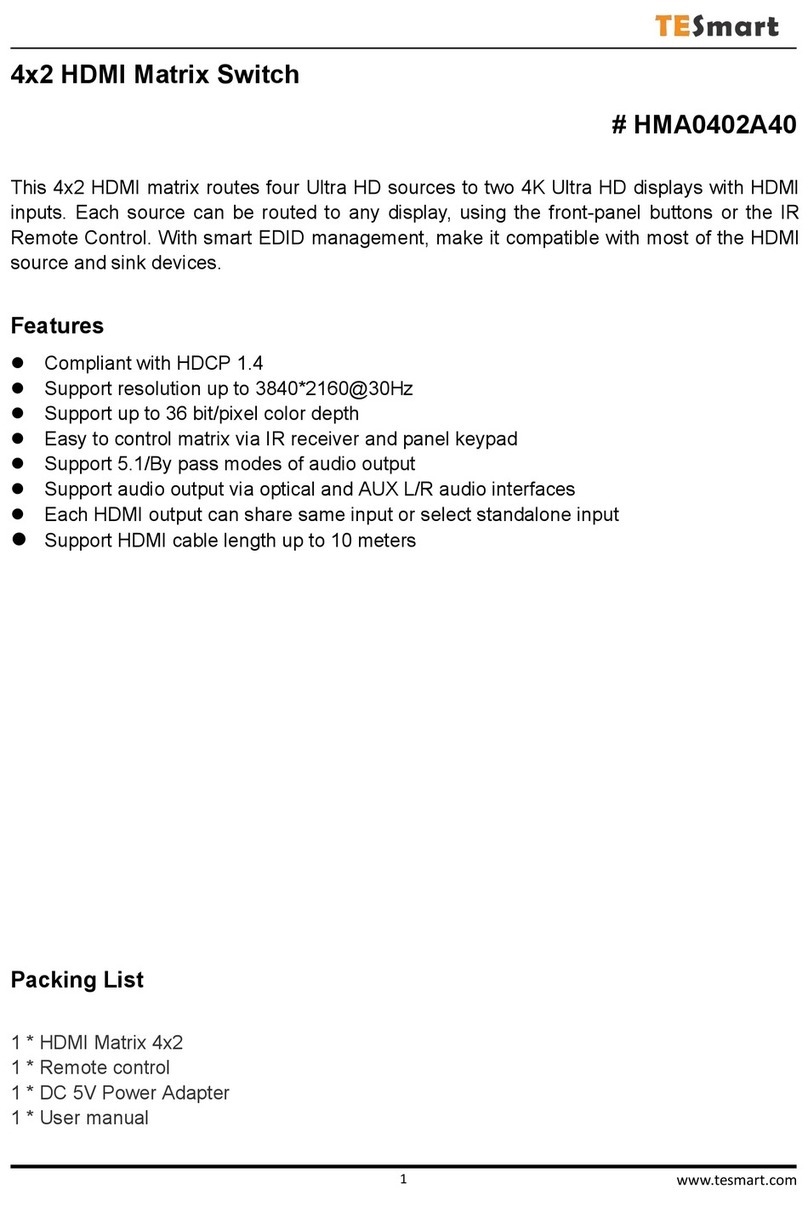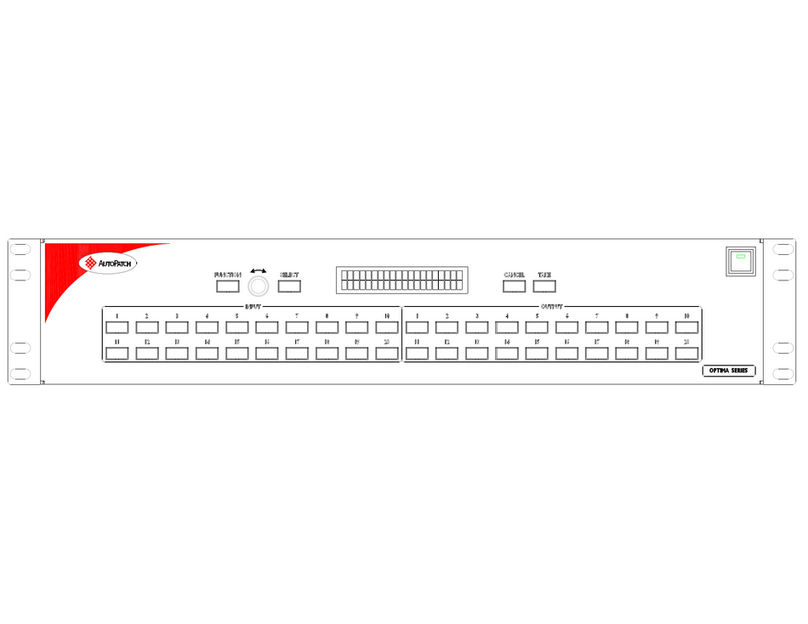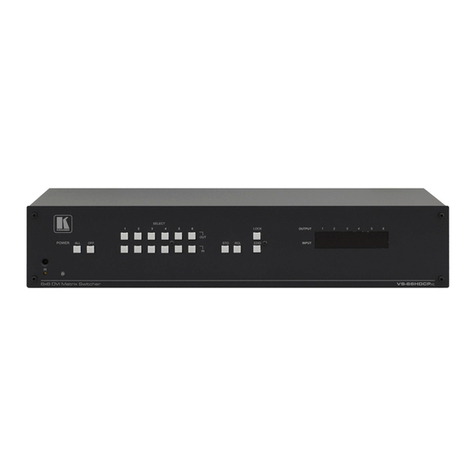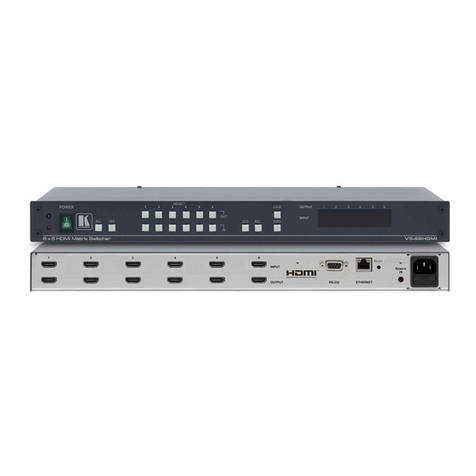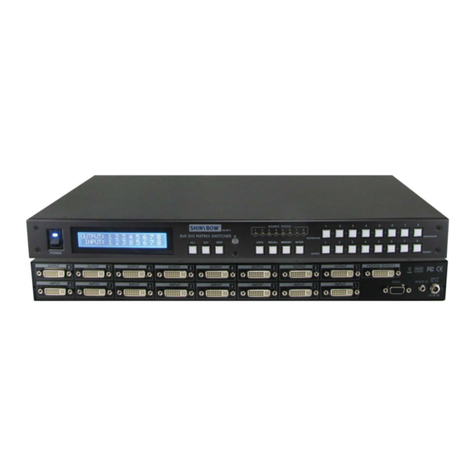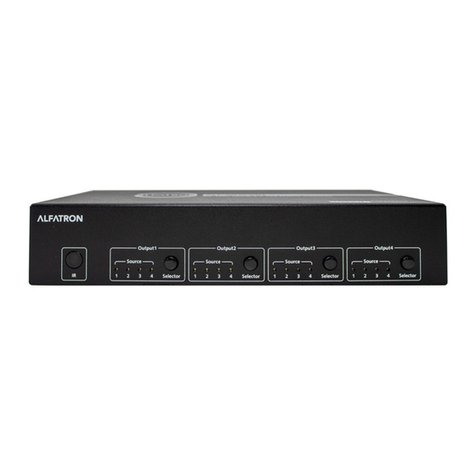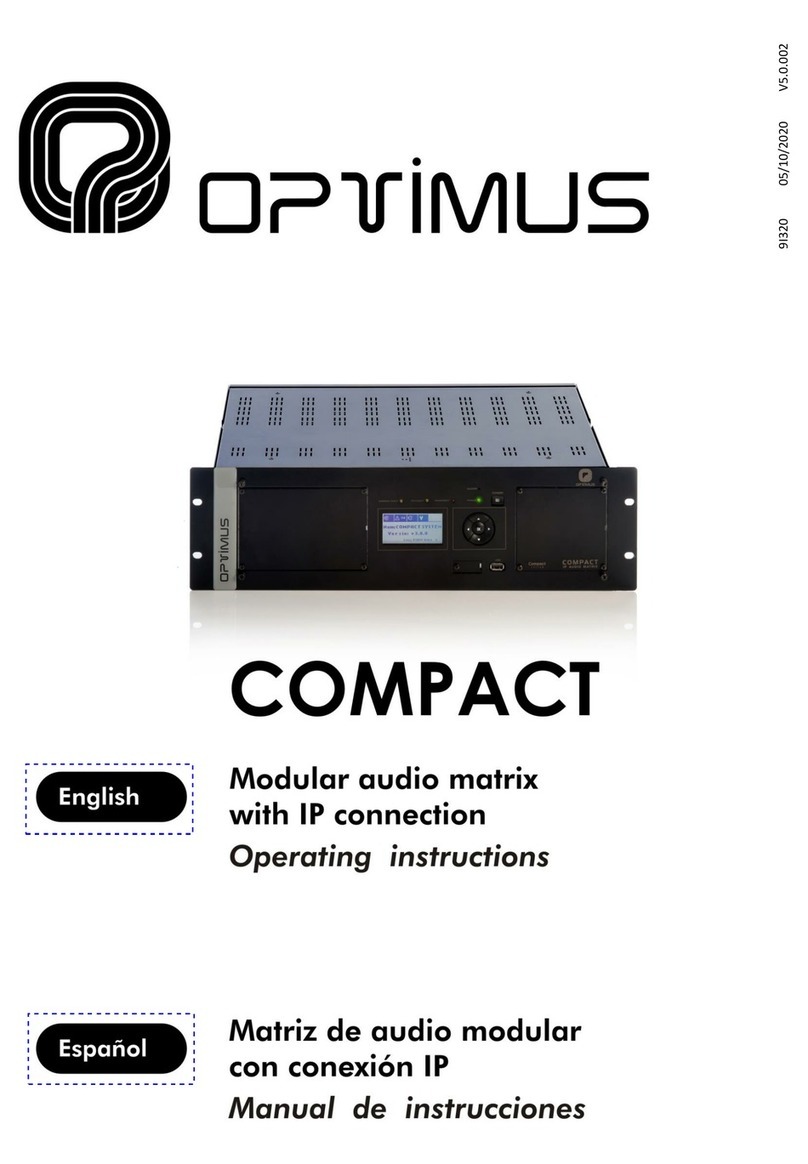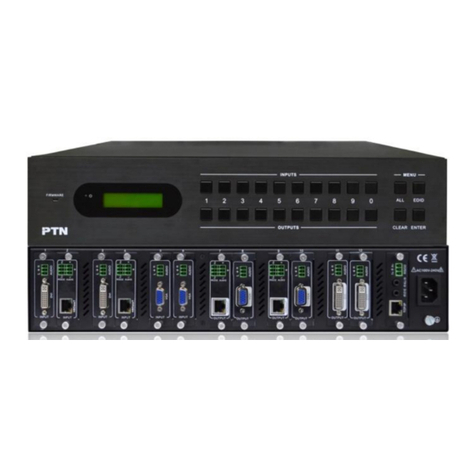
2
Hall Research Technologies, Inc.
3.1.2 Making Audio and Video Routings or “Ties” ..................................................... 19
3.1.2.1 Making a tie by Input................................................................................................. 20
Video and Audio to follow each other.................................................................................... 20
Video only or Audio only ....................................................................................................... 20
3.1.2.2 Making a tie by Output .............................................................................................. 20
Video and Audio to follow each other.................................................................................... 20
Video only or Audio only ....................................................................................................... 21
3.1.3 Recalling Presets (routing patterns).................................................................. 21
3.1.4 Saving Presets (routing patterns) ..................................................................... 21
3.1.5 Disconnecting all AV outputs (blank preset) ..................................................... 21
3.1.6 To reset system to factory defaults................................................................... 21
3.1.7 To set the audio output level to high (+4dBu) ................................................... 22
3.1.8 To adjust audio input gain and attenuation....................................................... 22
3.1.8.1 Using the Front Panel VU meter ............................................................................... 23
3.1.8.2 Adjusting the input audio Gain or attenuation ........................................................... 24
3.2 CONTROL COMMANDS (RS-232 AND IP) ...................................................................... 25
3.2.1 Naming Functions............................................................................................. 26
3.2.2 Routing Functions............................................................................................. 26
3.2.2.1 To make a video tie:.................................................................................................. 26
3.2.2.2 To make an audio tie:................................................................................................ 27
3.2.2.3 To make a synchronized audio/video tie:.................................................................. 27
3.2.3 Preset Pattern Saving and Routing Functions.................................................. 27
3.2.3.1 To recall a saved preset Video routing pattern: ........................................................ 27
3.2.3.2 To save the current Audio & Video routing pattern to a preset: ................................ 27
3.2.4 Restoring Factory Defaults ............................................................................... 27
3.2.5 Rebooting the System....................................................................................... 28
3.2.6 Setting Outputs to PRO Audio Line Levels....................................................... 28
3.2.7 To Adjust Audio Input Gain and Attenuation..................................................... 28
3.2.8 To Read Volume Units (VU sound level) of output #1 ...................................... 29
3.2.9 To Read Temperature inside the Matrix ........................................................... 29
3.2.10 To Read the Firmware Version....................................................................... 29
3.2.11 To Read Supply Voltages ............................................................................... 29
3.2.12 Real Time Clock Functions............................................................................. 30


